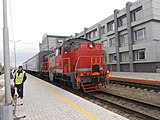Sakhalin Railway
| Sakhalin Railway Division | ||||||||||||||||||||||||||||||||||||||||||||||||||||||||||||||||||||||||||||||||||||||||||||||||||||||||||||||||||||||||||||||||||||||||||||||||||||||||||||||||||||||||||||||||||||||||||||||||||||||||||||||||||||||||||||||||||||||||||||||||||||||||||||||||||||||||||||||||||||||||||||||||||||||||||||||||||||||||||||||||||||||||||||||||||||||||||||||||||||||||||||||||||||||||||||||||||||||||||||||||||||||||||||||||||||||||||||||||||||||||||||||||||||||||||||||||||||||||||||||||||||||||||||||||||||||||||||||||||||||||||||||||||||||||||||||||||||||||||||||||||||||||||||
|---|---|---|---|---|---|---|---|---|---|---|---|---|---|---|---|---|---|---|---|---|---|---|---|---|---|---|---|---|---|---|---|---|---|---|---|---|---|---|---|---|---|---|---|---|---|---|---|---|---|---|---|---|---|---|---|---|---|---|---|---|---|---|---|---|---|---|---|---|---|---|---|---|---|---|---|---|---|---|---|---|---|---|---|---|---|---|---|---|---|---|---|---|---|---|---|---|---|---|---|---|---|---|---|---|---|---|---|---|---|---|---|---|---|---|---|---|---|---|---|---|---|---|---|---|---|---|---|---|---|---|---|---|---|---|---|---|---|---|---|---|---|---|---|---|---|---|---|---|---|---|---|---|---|---|---|---|---|---|---|---|---|---|---|---|---|---|---|---|---|---|---|---|---|---|---|---|---|---|---|---|---|---|---|---|---|---|---|---|---|---|---|---|---|---|---|---|---|---|---|---|---|---|---|---|---|---|---|---|---|---|---|---|---|---|---|---|---|---|---|---|---|---|---|---|---|---|---|---|---|---|---|---|---|---|---|---|---|---|---|---|---|---|---|---|---|---|---|---|---|---|---|---|---|---|---|---|---|---|---|---|---|---|---|---|---|---|---|---|---|---|---|---|---|---|---|---|---|---|---|---|---|---|---|---|---|---|---|---|---|---|---|---|---|---|---|---|---|---|---|---|---|---|---|---|---|---|---|---|---|---|---|---|---|---|---|---|---|---|---|---|---|---|---|---|---|---|---|---|---|---|---|---|---|---|---|---|---|---|---|---|---|---|---|---|---|---|---|---|---|---|---|---|---|---|---|---|---|---|---|---|---|---|---|---|---|---|---|---|---|---|---|---|---|---|---|---|---|---|---|---|---|---|---|---|---|---|---|---|---|---|---|---|---|---|---|---|---|---|---|---|---|---|---|---|---|---|---|---|---|---|---|---|---|---|---|---|---|---|---|---|---|---|---|---|---|---|---|---|---|---|---|---|---|---|---|---|---|---|---|---|---|---|---|---|---|---|---|---|---|---|---|---|---|---|---|---|---|---|---|---|---|---|---|---|---|---|---|---|---|---|---|---|---|---|---|---|---|---|---|---|---|---|---|---|---|---|---|---|---|---|---|---|---|---|---|---|---|---|---|---|---|---|---|---|---|---|---|---|---|---|---|---|---|---|---|---|---|---|---|---|---|---|---|---|---|---|---|---|---|---|---|---|---|---|---|---|---|---|---|---|---|---|---|---|---|---|---|---|---|---|---|---|---|---|---|---|---|---|---|---|---|---|---|---|---|---|---|---|---|---|---|---|
Russian gauge | ||||||||||||||||||||||||||||||||||||||||||||||||||||||||||||||||||||||||||||||||||||||||||||||||||||||||||||||||||||||||||||||||||||||||||||||||||||||||||||||||||||||||||||||||||||||||||||||||||||||||||||||||||||||||||||||||||||||||||||||||||||||||||||||||||||||||||||||||||||||||||||||||||||||||||||||||||||||||||||||||||||||||||||||||||||||||||||||||||||||||||||||||||||||||||||||||||||||||||||||||||||||||||||||||||||||||||||||||||||||||||||||||||||||||||||||||||||||||||||||||||||||||||||||||||||||||||||||||||||||||||||||||||||||||||||||||||||||||||||||||||||||||||||
| Old gauge | 1,067 mm (3 ft 6 in) | |||||||||||||||||||||||||||||||||||||||||||||||||||||||||||||||||||||||||||||||||||||||||||||||||||||||||||||||||||||||||||||||||||||||||||||||||||||||||||||||||||||||||||||||||||||||||||||||||||||||||||||||||||||||||||||||||||||||||||||||||||||||||||||||||||||||||||||||||||||||||||||||||||||||||||||||||||||||||||||||||||||||||||||||||||||||||||||||||||||||||||||||||||||||||||||||||||||||||||||||||||||||||||||||||||||||||||||||||||||||||||||||||||||||||||||||||||||||||||||||||||||||||||||||||||||||||||||||||||||||||||||||||||||||||||||||||||||||||||||||||||||||||||
| ||||||||||||||||||||||||||||||||||||||||||||||||||||||||||||||||||||||||||||||||||||||||||||||||||||||||||||||||||||||||||||||||||||||||||||||||||||||||||||||||||||||||||||||||||||||||||||||||||||||||||||||||||||||||||||||||||||||||||||||||||||||||||||||||||||||||||||||||||||||||||||||||||||||||||||||||||||||||||||||||||||||||||||||||||||||||||||||||||||||||||||||||||||||||||||||||||||||||||||||||||||||||||||||||||||||||||||||||||||||||||||||||||||||||||||||||||||||||||||||||||||||||||||||||||||||||||||||||||||||||||||||||||||||||||||||||||||||||||||||||||||||||||||
Sakhalin Railway (
History

The
On the Japanese half of the island, a 42.5-kilometre-long (26.4 mi) railway was built from Korsakov (大泊 (Ōtomari)) to Yuzhno-Sakhalinsk (豊原 (Toyohara)), with a gauge of 600 mm (1 ft 11+5⁄8 in). This section was later converted to the normal Japanese railway gauge of 1,067 mm (3 ft 6 in).
In 1911, a 64 km (40 mi) branch was built from Yuzhno-Sakhalinsk to
After the
The Soviet era saw the network extend into the north of the island, with a total extent in 1992 of 2,500 km (1,600 mi). By 2006, little-used sections such as Dachnoye–Aniva and Dolinsk–Starodubskoye had been closed, but the network still had a total length of 2,025 km (1,258 mi).
In 1992, the Sakhalin Railway was split from the Far Eastern Railway and made its own administrative entity. It reverted to being part of the Far Eastern Railway in 2010.[1]


In order to allow regular Russian trains to run on the island, the island's rail network underwent conversion to
Future prospects
Potential connection to the mainland

The Soviet Union under Joseph Stalin planned to construct a tunnel between Sakhalin and the Russian mainland, which would have linked Sakhalin to the rest of the Soviet rail network. The project was begun using forced labor between 1950 and 1953 but was canceled after Stalin's death.
Since 1973, a train ferry has connected Vanino (on the mainland near Sovetskaya Gavan) with the town of Kholmsk on Sakhalin.
There have been some calls from politicians to revive the concept of building a bridge or tunnel between Sakhalin and the mainland, although there have been concerns that the costs of the project would outweigh the benefits.
Potential connection to Hokkaido
There have also been proposals to connect the southern tip of Sakhalin to the Japanese island of Hokkaido via a 40-kilometre-long (25 mi) bridge or tunnel. This link would allow a direct land transport link for container traffic from Japan to the Asian mainland and Europe.[8][9]
Rolling stock
-
RA3
-
Д2
-
ТГ16 - 073
-
ТГМ7-027 in Yuzhno-Sakhalinsk
-
TG16M in Chekhov
See also
- Bogie exchange
- Vanino–Kholmsk train ferry
- Sakhalin Tunnel
- Sakhalin–Hokkaido Tunnel
- Newfoundland Railway: The railway was in a similar situation (until 1988) and remote location.
References
- ^ "Сахалинская железная дорога войдет в состав ДВЖД" [Sakhalin Railway will be part of the Far Eastern Railway]. // Sakhalin.info. Archived from the original on 2020-03-28. Retrieved 2020-03-28.
- ^ "Railway a Gauge of Sakhalin's Future". The Moscow Times. 7 July 2008. Archived from the original on 9 September 2012.
- ^ "Российская колея по всему Сахалину: движение открыто". Archived from the original on 2019-09-01. Retrieved 2019-08-30.
- ^ 共同通信 (2020-09-30). "サハリン、日本の鉄路に幕 宮沢賢治「銀河鉄道」にも | 共同通信". 共同通信 (in Japanese). Retrieved 2021-03-16.
- ^ "Sakhalin rail link too expensive.(World Report)". International Railway Journal. 1 December 2003. Archived from the original on 29 May 2007. Retrieved 2 August 2018.
- ^ "Russian President wants to connect Sakhalin with the Mainland (Russian)". Prima Media. 19 November 2008. Archived from the original on 21 July 2011. Retrieved 5 January 2012.
- ^ Vorotnikov, Vladislav (2013-02-18). "Russia plans rail link to Sakhalin island". railjournal.com. Archived from the original on 2018-08-03. Retrieved 2 August 2018.
- ^ "Plan for Tunnel to Sakhalin Unveiled". St Petersburg Times. 28 November 2000. Archived from the original on 5 June 2011. Retrieved 5 January 2012.
- ^ "Sakhalin-Hokkaido Tunnel Project Discussed in Sakhalin". Interfax. 29 September 2005. Archived from the original on 27 May 2012. Retrieved 5 January 2012.
External links
46°37′10″N 142°46′03″E / 46.61950°N 142.76757°E
- Russian Railways Official Site (Russian language)
- Sakhalin Railway Official Site (Russian language)
- Photo - project «Steam Engine» (Russian language)
- «The site of the railroad» S. Bolashenko (Russian language)





